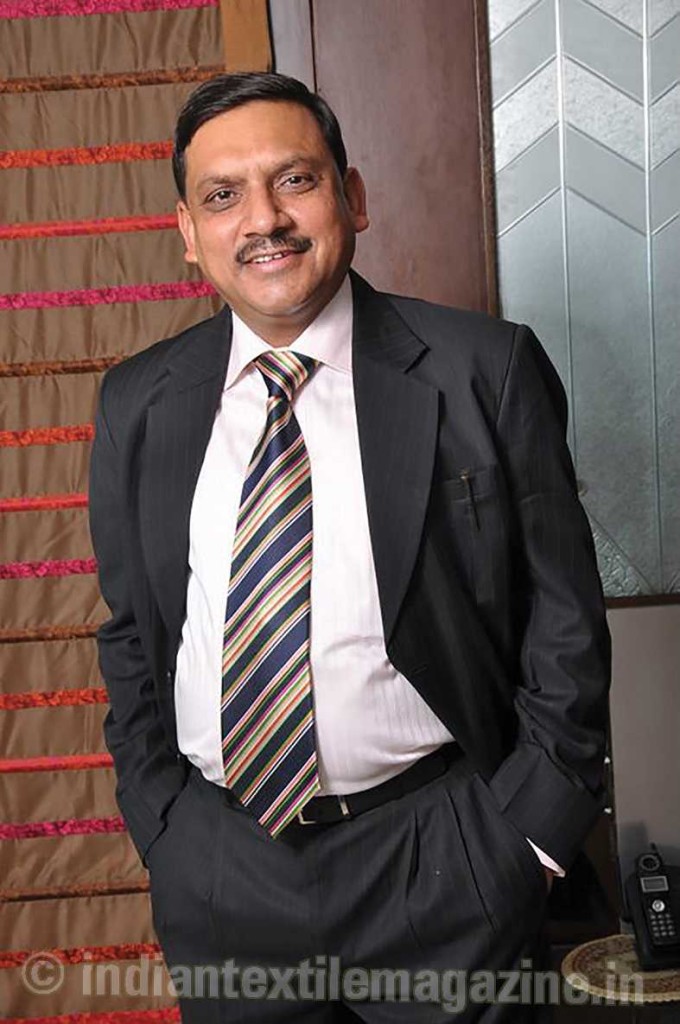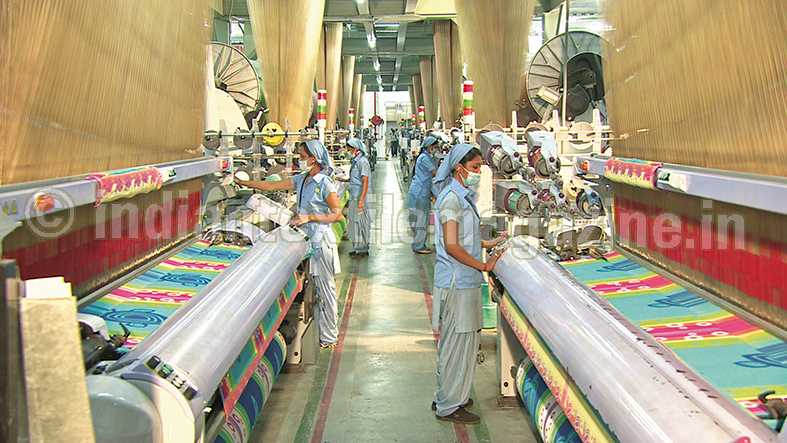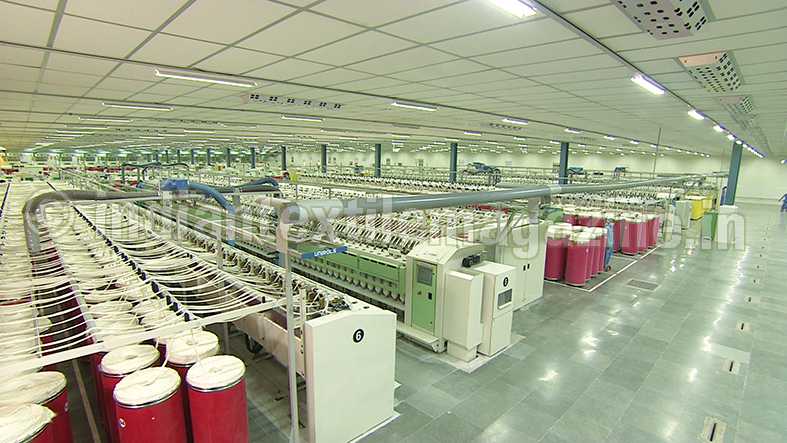By V.K. Goyal, Executive Director & Group CEO, SEL Group
We are living in an age of globalization which means sourcing capital from where it is the cheapest, manufacturing where it is most cost effective and selling where it is most profitable. As a result, we are not only in an age of shrinking physical distances but also shrinking profit margins, which literally leaves no room for inefficiencies. In fact, there is gradual but sure disappearance of the cost and pricing mechanism, which once was an integral part of any business.
In general, we are witnessing the textile and clothing industry being influenced by the economic downswing and recession resulting from the international contraction of consumption and sustained cost of inflationary inputs. This, in turn, is resulting into intense competition which is also fuelled by much more demanding customers. Customers today are finding no dearth of products/production source alternatives. Compliance and social responsibilities as one of the important guiding forces for successful business has further intensified the game of “survival of the fittest”.
Shorter product cycles
These are also the times when we are witnessing ever-shortening product life cycles, more rapid turnarounds, faster obsolescence of technology (as well as skills) and emergence of skilled and knowledge workers. As a consequence, customers and especially retailers are assuming a much more power and pivotal role in the design and merchandising process as a whole, and their bargaining powers are mercilessly increasing.
Let’s accept the fact that the world we live in today is a different place than of a few decades ago. The velocity of change in this global village is affecting the quality of our lives. Today, we stand on the threshold of a challenging and in fact an unforgiving future. The times ahead are also going to be very demanding for all sorts of organizations, and textile organizations are not immune to these fast pace changes. Going forward, one of the key attributes, in my view, would be the ability of organizations to adapt to change.

I have always considered change as a process by which future invades our lives and changes the way we think, live, work, interact and even buy. Those organizations which are unable to make transition in sync with the changes would be simply overwhelmed by what they are going to encounter. Only those organizations that are smarter, quicker and more flexible and adaptable would sustain, grow and prosper. Rapidity and flexibility is going to be the key. Tomorrow’s organizations need to have two souls: one highly creative and the other highly flexible and capable of increasingly rapid delivery and prompt response to customers coupled with the ability to adjust to rapidly changing fashion trends.
Creativity and innovation
When we talk of the textile industry, we see that there is little in our life that is not touched by textiles. Application of textiles has not remained about basic clothing only. It today covers a broad range of products which are used from deep inside the human body to outer space as well which is not limited to the human body but to the entire universe. This has been made possible largely because of creativity and innovation in textiles.
We have seen how the development of man-made fibres with tailored properties has opened up new opportunities for the application of textiles. Similarly, we have also seen as to how creativity and innovation in the area of new chemicals and finishes has increased the performance of various textile products. With the ever-advancing technology, creativity and innovation is going to remain a key area of thrust in the whole textile chain.
Going ahead, I expect that new manufacturing methods will be introduced, which in turn will offer possibilities of producing more complex and sophisticated textile items. The ability to develop innovative new products, in fact, is going to be a major source of competitive advantage for all the organizations in general and textile organizations in particular. Besides product innovation, we also need to innovate in the areas of cost reduction as well as efficient resource utilization.
Product & service differentiation
Industries in future need to inculcate the perception of uniqueness in their products in terms of their features, performance, consistency, durability and reliability. It is only niche products that would be relatively insulated from the erratic market behavior. Besides products, services also need to be differentiated. Delivery, complaint handling, customer training, and most importantly, a “culture of dynamism” to ensure speed in services and delivering new products hold the key to success. Organizations also need to be the “first mover” while entering as well as exiting and therefore need “creative destruction” as part and parcel of their business philosophies.
The constantly changing market is posing new challenges to the Indian textile industry as clients’ demands are also continually rising and are becoming more and more stringent. It is in this backdrop that organizations without any distinct features, without a clear vision or specific mission, or without permanent values, will sink in the mass of messages hitting the market.
Indian textile organizations need to cultivate brand loyalty amongst their customers, as this is the only way to command premiums, reduce customer exits and price sensitivity. This is also the only intangible barrier that can stop clients from gravitating towards other suppliers.
We must understand that brand is the most valuable asset of any organization and will remain key to customer satisfaction. Without innovation and R&D this would not happen. Business process innovation, in terms of building brands and creating designs, should be the immediate priority of any organization. It is only then that “Made in India” labeled products will earn global recognition.
Indian textiles – an unparalleled history
India has always remained a significant player in the global textile industry. It has played an important role in India’s industrial development. It has an unparalleled history of global trade in textiles dating back to several thousand years. In fact, India was once the largest global supplier of textiles.
Despite the colonial rule, licensing restrictions, quota curbs, preferential trade agreements suppressing the textile sector, India has come a long way in the last couple of decades, to not only enrich its manufacturing capabilities but also to diversify its product base, thereby emerging once again an important global player.
India is one of the few countries in the world that offer a vertical industry structure – from fiber to clothing, a large and diverse base of products (including fibers, intermediate products, and finished products), a large and sustained base of comparatively low-cost labor, a pool of workforce and managerial talent with strong design, product development, and merchandising sensibility; a vibrant and growing domestic market and sustainable better compliance practices.
Eventhough India’s share in the global textile trade in absolute terms is around four per cent, the country is well recognized for its USPs in the global textile market for over three-and-a-half decades now. In fact, India has slowly emerged as one of the most versatile, comprehensive and reliable textile sources in the world. Its dominant position in spun yarns, especially cotton and home textiles, is also well accepted globally. There is huge opportunity for India to reach up to $80 billion worth of exports by 2020, given the fact that there is continuous decline in textile and apparel industries in developed countries.
Recent data released by ‘UN Comtrade’ shows that India has indeed improved its ranking in global textiles as well as apparel exports. As the data shows, India now stands second in global textile exports, beating its competitors like Italy, Germany and Bangladesh.
Future outlook
The future outlook for the Indian textile industry looks promising, buoyed both by strong domestic consumption and export demand. With consumerism and disposable income slated to rise in the future, the retail sector is expected to experience a rapid growth with several international players already planning to enter the Indian market. It can well be a golden era for those willing to rise to the challenge.
If the challenges the Indian textile industry is facing are faced squarely, there is no reason that the modest success so far can turn into a magnificent one leading to India’s rapid repositioning as an important global player. Adoption of the “Five F” formula – farm to fibre to fabric to fashion to foreign – given by Prime Minister Narender Modi can give India its well-deserved pride of place vis-a-vis global textile industry. Let’s modernize our factories as well as thoughts and stop looking for Government help in everything. After all, self-help is the best help.

